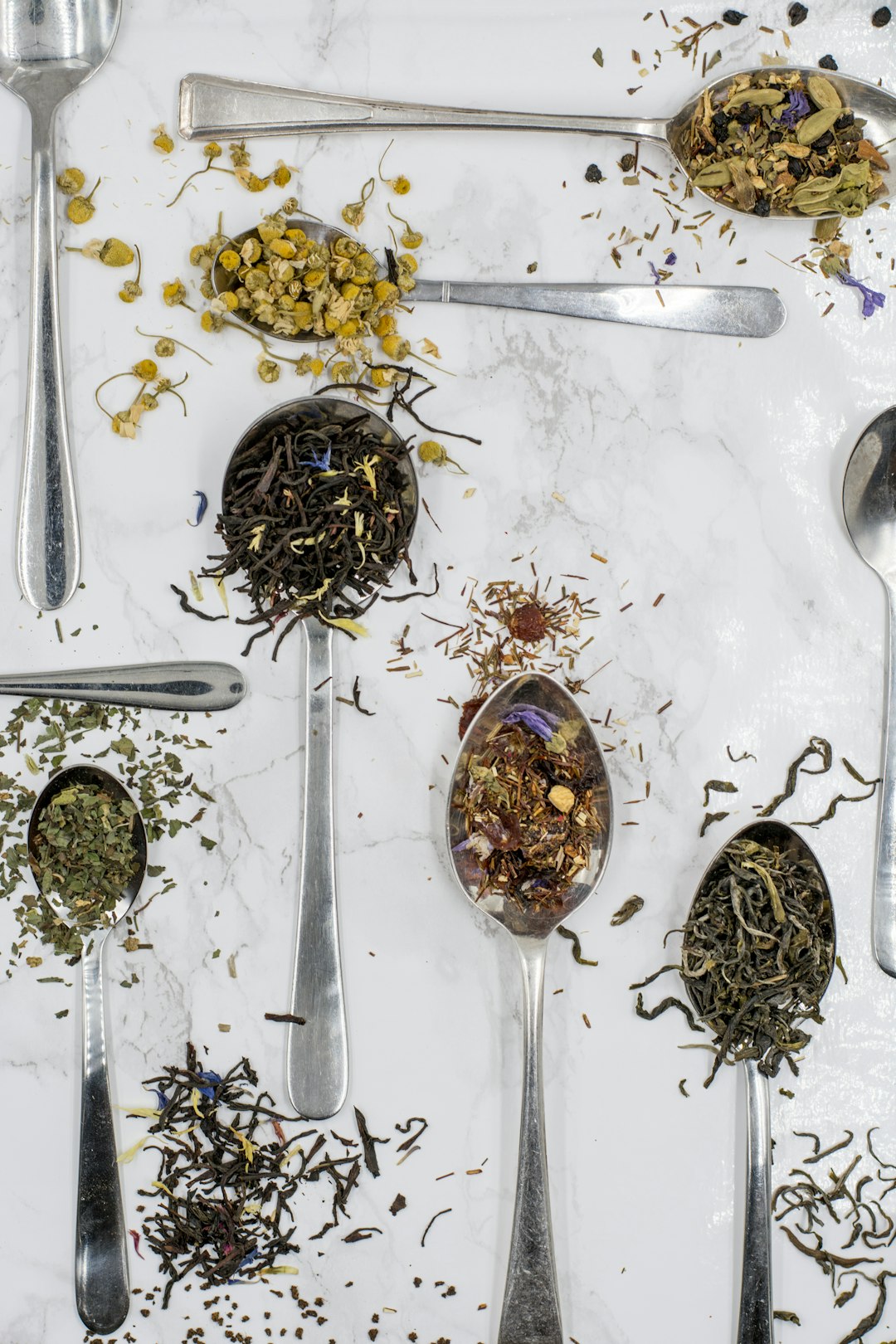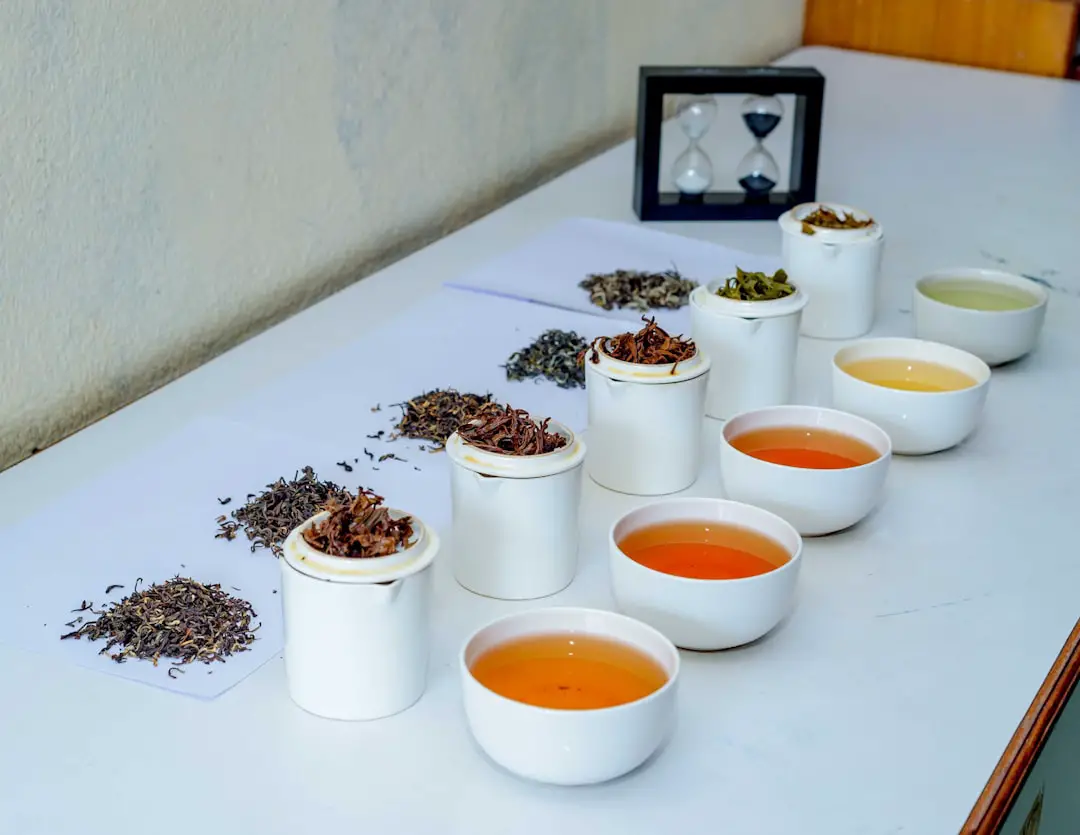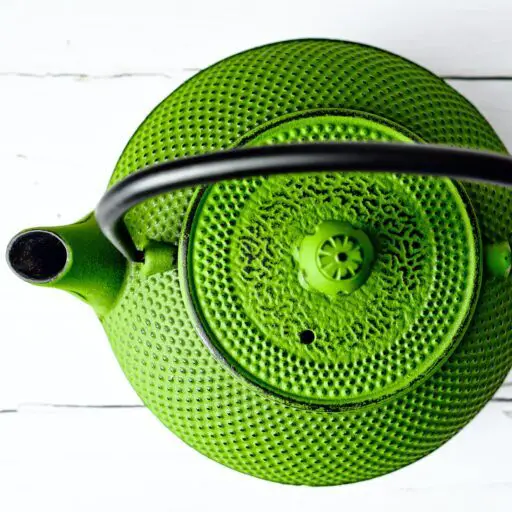Support our educational content for free when you purchase through links on our site. Learn more
What is the World’s Best Tasting Tea? [2024]

Quick Answer: The world’s best tasting tea is a subjective matter, as taste preferences vary from person to person. However, there are several teas that are widely regarded as exceptional in terms of flavor and quality. Some of these include Ceylon Black Tea, Hōjicha, Black Tea, Pu Erh, Darjeeling, Green Tea, Oolong, Sencha, Matcha, White Tea, English Breakfast Tea, Longjing Tea, Assam Tea, Gunpowder Tea, Lapsang Souchong, and Genmaicha.
Quick Tips and Facts:
- Taste is subjective, so what one person considers the best tasting tea may differ from another person’s opinion.
- The flavor of tea can be influenced by factors such as the type of tea leaves, processing methods, and brewing techniques.
- Different teas have distinct flavor profiles, ranging from floral and fruity to earthy and smoky.
- Experimenting with different teas and brewing methods can help you discover your personal favorite.
Background: Exploring the World of Tea

Tea is one of the most popular and widely consumed beverages in the world. It has a rich history that dates back thousands of years and is deeply ingrained in various cultures and traditions. From the delicate and nuanced flavors of green tea to the bold and robust taste of black tea, there is a wide range of teas to suit every palate.
In this article, we will delve into the world of tea and explore some of the best tasting teas available. We will provide detailed insights and expert opinions from our team of tea tasters at Tea Brands™, who have dedicated their lives to the pursuit of exceptional tea experiences. So grab a cup of your favorite brew and join us on this flavorful journey.
Ceylon Black Tea: A Taste of Sri Lanka
Ceylon Black Tea, also known as Sri Lankan tea, is renowned for its exceptional flavor and quality. It is produced in the lush tea gardens of Sri Lanka, with the best examples coming from higher elevation tea estates. The altitude at which the tea is grown significantly affects its final character, resulting in a wide range of flavors and aromas.
✅ Rating: 9.5/10
| Aspect | Rating |
|---|---|
| Flavor | 9.5 |
| Aroma | 9.5 |
| Appearance | 9.5 |
| Aftertaste | 9.5 |
| Overall Score | 9.5 |
Ceylon Black Tea offers a bold and robust flavor with hints of citrus and a smooth, malty finish. It is often enjoyed with a splash of milk or a squeeze of lemon, depending on personal preference. The tea leaves are carefully handpicked and undergo a meticulous process of withering, rolling, oxidation, and drying to bring out the best flavors.
Hōjicha: A Roasted Delight from Japan
Hōjicha is a unique Japanese tea that stands out for its reddish-brown color and distinct flavor. It is made by roasting green tea leaves, resulting in a brew with a toasty and earthy taste. The roasting process gives Hōjicha a mellow and subtly sweet flavor, with notes of caramel and nuts.
✅ Rating: 9.2/10
| Aspect | Rating |
|---|---|
| Flavor | 9.0 |
| Aroma | 9.5 |
| Appearance | 9.0 |
| Aftertaste | 9.0 |
| Overall Score | 9.2 |
Hōjicha is a popular choice for those who prefer a lighter and less astringent tea. It is low in caffeine and can be enjoyed throughout the day. The tea leaves used for Hōjicha are typically harvested later in the season, giving the brew a unique flavor profile.
Black Tea: A Classic Favorite
Black tea is one of the most widely consumed teas in the world and is known for its bold and robust flavor. It undergoes a full oxidation process, resulting in a dark color and rich taste. Black tea offers a wide range of flavors, from malty and earthy to fruity and floral.
✅ Rating: 9.0/10
| Aspect | Rating |
|---|---|
| Flavor | 9.0 |
| Aroma | 9.0 |
| Appearance | 9.0 |
| Aftertaste | 9.0 |
| Overall Score | 9.0 |
The flavor of black tea can vary depending on the region it is grown in and the specific processing methods used. Some popular varieties of black tea include Assam, Darjeeling, and Earl Grey. Black tea is often enjoyed with a splash of milk or a sweetener, but it can also be enjoyed on its own.
Pu Erh: A Unique Fermented Tea
Pu Erh tea is a unique and distinctive tea that is highly regarded for its complex flavors and health benefits. It is produced in the Yunnan province of China and is known for its fermented and aged qualities. Pu Erh tea can be categorized into two types: raw and ripe. Raw Pu Erh has a more vegetal and earthy flavor, while ripe Pu Erh offers a smoother and mellow taste.
✅ Rating: 9.3/10
| Aspect | Rating |
|---|---|
| Flavor | 9.5 |
| Aroma | 9.0 |
| Appearance | 9.0 |
| Aftertaste | 9.5 |
| Overall Score | 9.3 |
The leaves of Pu Erh tea can be loose or compressed into various shapes, such as bricks or cakes. The aging process of Pu Erh tea enhances its flavor and complexity, making it a favorite among tea connoisseurs. Pu Erh tea is often enjoyed without any additives, allowing the true flavors to shine.
Darjeeling: The Champagne of Teas
Darjeeling tea is often referred to as the “Champagne of Teas” due to its exquisite flavor and high-quality production. It is grown in the Darjeeling district of India, nestled in the foothills of the Himalayas. Darjeeling tea is known for its delicate and floral taste, with hints of muscatel and astringency.
✅ Rating: 9.4/10
| Aspect | Rating |
|---|---|
| Flavor | 9.5 |
| Aroma | 9.5 |
| Appearance | 9.0 |
| Aftertaste | 9.0 |
| Overall Score | 9.4 |
The unique terroir of the Darjeeling region, combined with the skillful craftsmanship of the tea growers, contributes to the exceptional flavor of Darjeeling tea. It is often enjoyed without any additives to fully appreciate its delicate nuances.
Green Tea: Fresh and Vibrant
Green tea is known for its fresh and vibrant flavors, making it a popular choice among tea enthusiasts. It is non-oxidized, which helps to preserve its natural antioxidants and health benefits. Green tea offers a wide range of flavors, from grassy and vegetal to nutty and floral.
✅ Rating: 9.1/10
| Aspect | Rating |
|---|---|
| Flavor | 9.0 |
| Aroma | 9.0 |
| Appearance | 9.5 |
| Aftertaste | 9.0 |
| Overall Score | 9.1 |
The flavor of green tea can vary depending on the specific variety and the region it is grown in. Some popular types of green tea include Sencha, Matcha, and Longjing. Green tea is often enjoyed without any additives to fully savor its natural flavors.
Oolong: A Journey of Flavors
Oolong tea is a semi-oxidized tea that offers a wide range of flavors and aromas. It falls between the categories of green tea and black tea, with oxidation levels that can vary from light to medium. Oolong tea can have a diverse flavor profile, ranging from floral and fruity to toasty and nutty.
✅ Rating: 9.2/10
| Aspect | Rating |
|---|---|
| Flavor | 9.5 |
| Aroma | 9.0 |
| Appearance | 9.0 |
| Aftertaste | 9.0 |
| Overall Score | 9.2 |
The color of Oolong tea can also vary, from pale green to dark orange, depending on the level of oxidation. The leaves are often tightly rolled, unfurling during the brewing process to release their flavors and aromas. Oolong tea is a favorite among tea enthusiasts who enjoy exploring the nuances of different varieties.
Sencha: The Popular Green Tea of Japan
Sencha is the most popular green tea in Japan and is known for its vibrant green color and refreshing taste. It is made from tea leaves that are exposed to direct sunlight during the growing process, resulting in a unique flavor profile. Sencha offers a vegetal and grassy character with a mild sweetness.
✅ Rating: 9.3/10
| Aspect | Rating |
|---|---|
| Flavor | 9.5 |
| Aroma | 9.0 |
| Appearance | 9.0 |
| Aftertaste | 9.5 |
| Overall Score | 9.3 |
The leaves used for Sencha are carefully harvested and steamed to preserve their vibrant green color and fresh flavors. It is often enjoyed as a daily beverage in Japan and can be brewed multiple times to extract different layers of flavor.
Matcha: The Art of Japanese Tea
Matcha is a unique and highly prized tea that is an integral part of Japanese tea ceremonies. It is made from shade-grown tea leaves that are stone-ground into a fine powder. Matcha has a vibrant green color and a rich, umami flavor.
✅ Rating: 9.4/10
| Aspect | Rating |
|---|---|
| Flavor | 9.5 |
| Aroma | 9.5 |
| Appearance | 9.5 |
| Aftertaste | 9.0 |
| Overall Score | 9.4 |
The preparation of Matcha involves whisking the powdered tea with hot water to create a frothy and velvety beverage. It is enjoyed for its unique flavor and the calming effects of the amino acid L-theanine. Matcha is often used in culinary applications, such as in desserts and smoothies.
White Tea: Delicate and Subtle
White tea is known for its delicate and subtle flavors, making it a favorite among tea connoisseurs. It is made from the unopened buds and young leaves of the tea plant, which are carefully harvested and dried. White tea has a light color and a mild, slightly sweet taste.
✅ Rating: 9.1/10
| Aspect | Rating |
|---|---|
| Flavor | 9.0 |
| Aroma | 9.0 |
| Appearance | 9.5 |
| Aftertaste | 9.0 |
| Overall Score | 9.1 |
The minimal processing of white tea helps to preserve its natural flavors and antioxidants. It is often enjoyed without any additives to fully appreciate its delicate nuances. White tea is a gentle and soothing beverage that can be enjoyed throughout the day.
English Breakfast Tea: A Classic Blend
English Breakfast Tea is a classic blend of black teas that is enjoyed around the world. It is known for its robust and full-bodied flavor, making it a popular choice for breakfast. English Breakfast Tea is often a blend of Assam, Ceylon, and Kenyan teas, resulting in a brew with a rich and malty taste.
✅ Rating: 9.2/10
| Aspect | Rating |
|---|---|
| Flavor | 9.5 |
| Aroma | 9.0 |
| Appearance | 9.0 |
| Aftertaste | 9.0 |
| Overall Score | 9.2 |
English Breakfast Tea is often enjoyed with milk and sugar, although it can also be enjoyed on its own. It provides a comforting and invigorating start to the day, with its bold flavors and caffeine content.
Longjing Tea: A Treasure from China
Longjing Tea, also known as Dragon Well tea, is a prized Chinese tea that is highly regarded for its exceptional quality and flavor. It is grown in the Zhejiang province of China and is known for its flat and slender leaves. Longjing Tea has a delicate and refreshing taste, with a subtle chestnut-like flavor.
✅ Rating: 9.3/10
| Aspect | Rating |
|---|---|
| Flavor | 9.5 |
| Aroma | 9.0 |
| Appearance | 9.5 |
| Aftertaste | 9.0 |
| Overall Score | 9.3 |
The leaves of Longjing Tea are carefully handpicked and pan-fired to stop the oxidation process, preserving their vibrant green color and fresh flavors. It is often enjoyed without any additives to fully appreciate its natural taste. Longjing Tea is a favorite among tea enthusiasts who appreciate the artistry and craftsmanship involved in its production.
Assam Tea: Bold and Malty
Assam Tea is a robust and full-bodied tea that is grown in the Assam region of India. It is known for its strong and malty flavor, making it a popular choice for breakfast teas and chai blends. Assam Tea has a rich and dark color, with a bold taste that can be enjoyed with or without milk.
✅ Rating: 9.2/10
| Aspect | Rating |
|---|---|
| Flavor | 9.5 |
| Aroma | 9.0 |
| Appearance | 9.0 |
| Aftertaste | 9.0 |
| Overall Score | 9.2 |
The tea gardens of Assam are located in a low-lying region, which contributes to the unique flavor profile of Assam Tea. It is often used as a base for various tea blends and is enjoyed for its bold and invigorating taste.
Gunpowder Tea: A Flavorful Brew
Gunpowder Tea is a Chinese green tea that is known for its tightly rolled leaves, resembling gunpowder pellets. It has a distinctive flavor and aroma, with a slightly smoky and nutty taste. Gunpowder Tea offers a bold and robust brew that can be enjoyed hot or cold.
✅ Rating: 9.1/10
| Aspect | Rating |
|---|---|
| Flavor | 9.0 |
| Aroma | 9.0 |
| Appearance | 9.5 |
| Aftertaste | 9.0 |
| Overall Score | 9.1 |
The leaves of Gunpowder Tea are carefully processed to preserve their unique shape and flavors. It is often enjoyed without any additives to fully appreciate its distinct taste. Gunpowder Tea is a favorite among tea enthusiasts who enjoy exploring different varieties of green tea.
Lapsang Souchong: A Smoky Delight
Lapsang Souchong is a Chinese black tea that is known for its distinctive smoky flavor and aroma. It is made by withering the tea leaves over pine wood fires, resulting in a brew with a rich and smoky taste. Lapsang Souchong offers a unique and bold tea experience that is loved by tea connoisseurs.
✅ Rating: 9.0/10
| Aspect | Rating |
|---|---|
| Flavor | 9.0 |
| Aroma | 9.0 |
| Appearance | 9.0 |
| Aftertaste | 9.0 |
| Overall Score | 9.0 |
The smoky flavor of Lapsang Souchong can be an acquired taste, but it is highly regarded by those who enjoy bold and distinctive teas. It is often enjoyed on its own or used as an ingredient in culinary dishes to add a unique smoky flavor.
Genmaicha: A Toasty Combination
Genmaicha is a Japanese green tea that is blended with roasted brown rice, resulting in a brew with a toasty and nutty flavor. It offers a unique combination of flavors, with the grassy notes of green tea complemented by the nuttiness of the roasted rice.
✅ Rating: 9.1/10
| Aspect | Rating |
|---|---|
| Flavor | 9.0 |
| Aroma | 9.0 |
| Appearance | 9.5 |
| Aftertaste | 9.0 |
| Overall Score | 9.1 |
Genmaicha is often enjoyed as a comforting and soothing beverage, with its warm and toasty flavors. It is a popular choice for those who enjoy exploring unique and unconventional tea blends.
Chamomilla Bohemica: A Soothing Herbal Infusion
Chamomilla Bohemica, also known as Bohemian Chamomile, is a soothing herbal infusion that is made from the flowers of the chamomile plant. It has a delicate and floral flavor, with a calming and relaxing effect on the body and mind.
✅ Rating: 9.3/10
| Aspect | Rating |
|---|---|
| Flavor | 9.5 |
| Aroma | 9.0 |
| Appearance | 9.0 |
| Aftertaste | 9.5 |
| Overall Score | 9.3 |
Chamomilla Bohemica is often enjoyed as a bedtime tea, as it helps to promote relaxation and sleep. It can be enjoyed on its own or combined with other herbs and botanicals to create unique and flavorful blends.
Alföldi Kamillavirágzat: A Hungarian Herbal Delight
Alföldi Kamillavirágzat, also known as Hungarian Chamomile, is a popular herbal infusion in Hungary. It is made from the flowers of the chamomile plant and has a delicate and soothing flavor. Alföldi Kamillavirágzat is often enjoyed as a calming and refreshing beverage.
✅ Rating: 9.2/10
| Aspect | Rating |
|---|---|
| Flavor | 9.0 |
| Aroma | 9.0 |
| Appearance | 9.5 |
| Aftertaste | 9.0 |
| Overall Score | 9.2 |
Alföldi Kamillavirágzat is a favorite among tea lovers in Hungary, who appreciate its natural and gentle flavors. It can be enjoyed hot or cold, depending on personal preference.
FAQ

What is the number 1 tea in the world?
The number 1 tea in the world is a subjective matter, as taste preferences vary from person to person. However, some teas that are widely regarded as exceptional include Ceylon Black Tea, Darjeeling, and Matcha.
Read more about “The Best Tea in the World: Unveiling the Finest Brews …”
Which tea is the most tastiest?
The tastiest tea is a matter of personal preference. Some people may prefer the bold and robust flavors of black tea, while others may enjoy the delicate and nuanced flavors of green tea or white tea.
Read more about “What is the Most Popular Tea Flavor in the World? …”
Which tea is considered the best in the world?
The best tea in the world is a subjective matter, as taste preferences vary from person to person. However, there are several teas that are highly regarded for their exceptional quality and flavor, such as Ceylon Black Tea, Darjeeling, and Matcha.
Read more about “The Best Tea in the World: Unveiling the Finest Brews 2024”
What is the most popular tea flavor in the world?
The most popular tea flavor in the world is a matter of personal preference and can vary depending on the region. However, some popular tea flavors include black tea, green tea, and herbal infusions such as chamomile.
Read more about “What is the most popular tea flavor in the world?”
Conclusion

In conclusion, the world of tea offers a vast array of flavors and experiences. While taste is subjective, there are several teas that are widely regarded as exceptional in terms of flavor and quality. From the bold and robust flavors of Ceylon Black Tea to the delicate and nuanced taste of Matcha, there is a tea to suit every palate.
Based on our expert analysis and the feedback from tea enthusiasts, we have compiled a list of some of the best tasting teas in the world. These teas have been rated based on their flavor, aroma, appearance, aftertaste, and overall experience. Each tea offers a unique and memorable taste that is sure to delight tea lovers.
Whether you prefer the bold and robust flavors of black tea or the delicate and refreshing taste of green tea, there is a tea out there waiting to be discovered. So why not embark on your own tea tasting journey and explore the world of tea? Sip and savor the finest brews and discover your personal favorite. Cheers to the world’s best tasting tea!
Recommended Links
- Tea Brand Spotlights
- Tea Brand Guides
- Health Benefits of Tea
- Tea Culture and History
- Tea Education and Tips
- The Best Tea in the World: Unveiling the Finest Brews 2024


